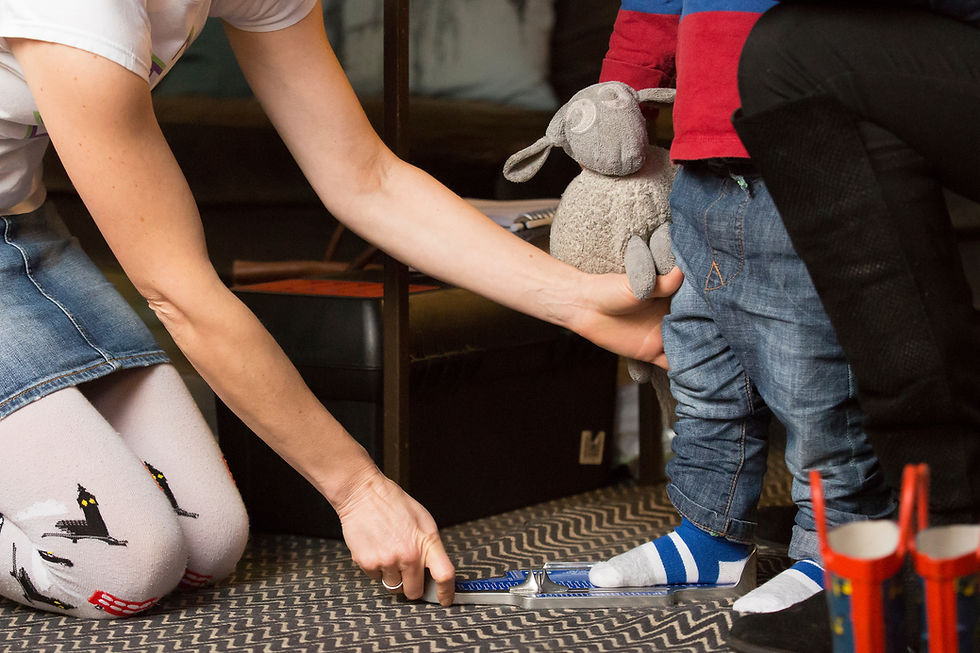Some customers come to me, totally confused, after being given three different measurements for their child's feet in three different shops. Frustrating as it is, just like clothes, there is no standardisation of shoe sizes. There are many factors that affect the size and fit of shoes, including the method of manufacture, country of origin, the materials used and the shape of the last (shoe mould).
While being told different sizes can seem baffling, it is important to remember that the measuring gauge is just one element of the shoe fitting process. It is a guide to the shoe fitter, who uses their skill and knowledge of the shoes they have in stock to select the ones that will provide the best fit. The most important step in the process is seeing and feeling the shoes on the feet.

The situation is further complicated by the fact that many shoes are manufactured abroad using different sizing systems, such as EU or US. There is a whole array of measuring gauges available, some designed to be used when seated and most while standing. I use a continental (EU) Brannock gauge, which is best suited to the shoes I stock. Many shops use branded gauges, such as Start-Rite or Clarks, which are graded specifically to suit their shoes. Just remember that whatever the measurement, it does not guarantee all shoes in this size will be a good fit.
Children's shoes are generally designed with an allowance for growing room, so there is no need to size up. This allowance will differ from brand to brand, so once again, it is the shoefitter's job to advise on the appropriate amount of growing room. Wearing shoes that are too big can cause as many problems as shoes that are too tight.
Before I wrap up, a quick fact that geeks like me will love, the UK shoe sizing system can be traced back to measurements introduced by King Edward II in 1324 based on barleycorns! Three barleycorns placed end to end was the official measurement for one inch, much later this measurement of one barleycorn, 1/3 inch, was generally adopted as one shoe size, which remains the case!
So to sum up, the measuring gauge is a tool the shoefitter uses as a starting point. There are many factors affecting the fit of the shoe and the only way to determine whether a pair of shoes fits properly is to put them on the feet, check how they fit the whole foot and watch how the child moves around in them.
